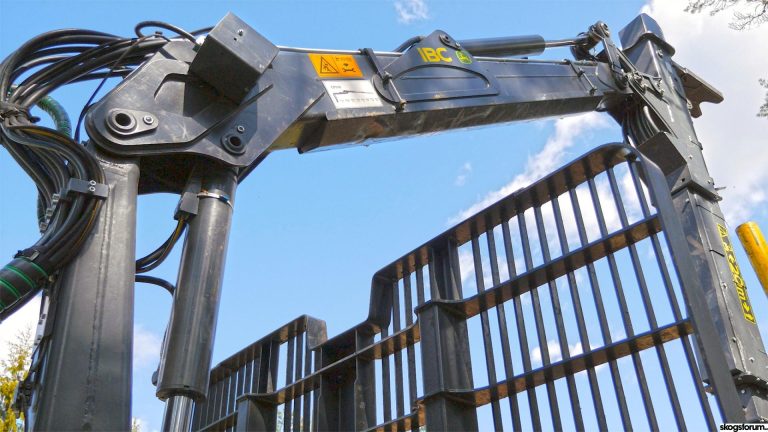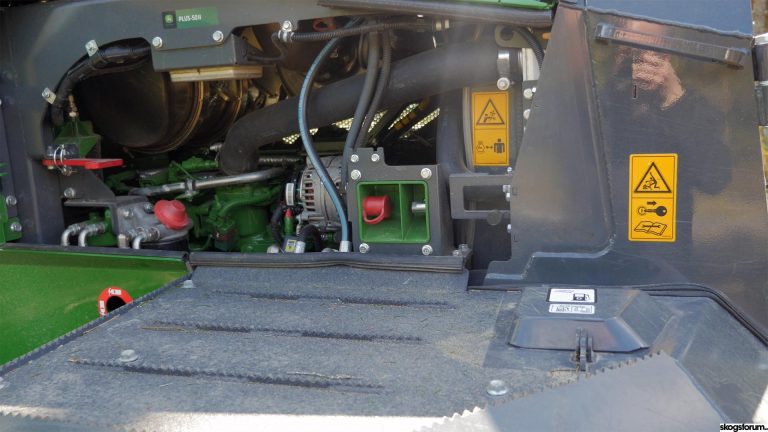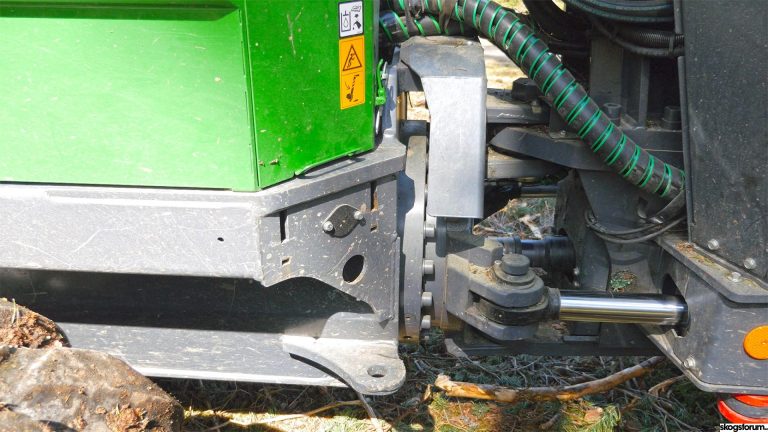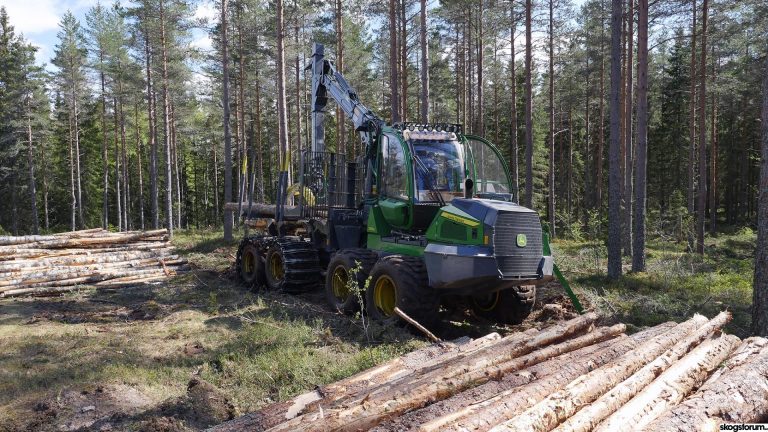In the spring of 2018, John Deere upgraded their smallest forwarder to the G version. The mini 810E disappeared for good and was replaced by John Deere 910G, at the same time as the John Deere 1010E was upgraded to 1010G.
The 1010 model has its origins in the Lokomo forwarder and perhaps primarily the model 910. This became FMG 910 and then the six-wheeled Timberjack 1010. In the 00´s, it became a John Deere and increasingly popular in the eight-wheel version. Probably because of its origin, it has not been a particularly common forwarder model in Sweden. Now, the 1010 in the form of the G version has established itself in the forest thinning industry in Sweden too.
Say hello to the 1010G, because it’s here to stay!
From a driver’s perspective, the 1010G is a pleasant experience. It runs nice and smoothly, and the test forwarder had 26.5” wheels which made it overcome obstacles with ease and made driving in the cab an even more enjoyable experience. It has a swivel cab with automatic levelling which is usually perceived as a good function for the driver, and it has crane tip control!
Put together, this makes the 1010G a machine that takes care of the driver and even makes a less experienced driver more productive while reducing stress even on experienced forwarder operators. A big plus with crane tip control is that you get end position damping on all functions of the crane.
Heavyweight?
The word in the title of this post was chosen for its double meaning. Since John Deere has a strong position in the Swedish forest machine market, from a market standpoint perspective, the 1010G will probably be a heavyweight in its category, but heavyweight can also be applied to the considerable weight of the machine.
The test forwarder has been registered with the Swedish Transport Agency and must therefore be weighted. With a rotating cab, IBC, 26.5” wheels and a short frame it weighs in at 18,230 kg. This may be considered high for an 11-ton thinning forwarder. Fully fueled and with tracks, it will probably weigh over 20 tons. On the other hand, there are 26.5” wheels, which increases the surface area and reduces the ground pressure. In addition, the 1010G can be obtained with a long bogie on the load section. So, there’s no need to panic if you look at the whole picture.
Another aspect to consider in today’s forestry industry is that an 11 ton machine may sometimes be used in final harvesting. The forest machine manufacturers likely build based on how the customers plan to use the machines, and for heavier use they must be reinforced. That is why the 1010G has the same loading area as an 810E with a wide cargo space, but weights ~5 tons more.
A technological forwarder
With the G series, the 1010G has a 4045 diesel engine that John Deere bumped directly to Step 5 of the emission requirements. This means that the engines are standard Step 5 (TierV) approved. One of the big changes here is that Step 5 engines must, in principle, cut particle emissions in half (NOx and CO are basically the same as in Step 4).
In short – all engines in new forest machines now have AdBlue, as does John Deere’s 1010G.
The 1010G also has ADC, adaptive control of the powertrain. For the driver, this is evident in the fact that you can choose three different driving modes, and if you can manage with the ECO mode there is probably diesel to save. The demo machine had an estimated consumption level of just over 9 liters per hour in its own computer. But a demo machine does not run like a normal forwarder, so it is too early to draw any conclusions.
In principle, all John Deere forwarders sold in Sweden today are sold with crane tip control. John Deere calls it IBC. In summary, IBC makes crane driving less stressful and easier on the driver. Given the number of machines sold, IBC may well be a success for John Deere. There’s now a special unloading mode that facilitates unloading, and through IBC all movements of the crane now have end position dampening – this is all great!
In addition, John Deere, like the other forest machine manufacturers, offers a wide range of follow-up programs and data collection via software.
Summary
The 1010G is a nice forwarder to drive. The driveline is soft but powerful, and the leveling of the cab is quick and easily erases minor bumps. It’s quiet and pleasant in the cab, though it may not have a great deal of space inside. IBC makes crane driving easier and more efficient. With a short frame it worked fine in thinning projects, it tracks well and can handle tight double turns without major problems.
Some negative points are that the cargo space is as large (or small) as both the 910G and the old 810E. Had it been raised to a gate area of 4.0 m2 to 4.2 m2, then it would have made a relatively big difference. The customers who have problems with this may wish to look at the 1110G instead. It has the same crane, 26.5” wheels and 4.6 square meters of loading area in a wide position. The cargo space is 26 cm wider than 1010G but still under 3 m in total width (2.96 m).
Around the campfire it was also heard that some thought that the torque of the crane is lower than it should be. This is noticed mainly in steep slopes as the turn of the crane does not always manage to fully swing the bundle. It is certainly something that can be solved by JD for the customers concerned by it.
The list price for the John Deere 1010G is approximately 3 million SEK (~$292,000).
















